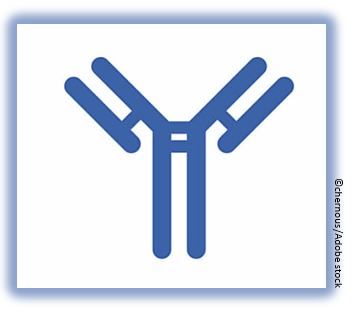- Clinical Technology
- Adult Immunization
- Hepatology
- Pediatric Immunization
- Screening
- Psychiatry
- Allergy
- Women's Health
- Cardiology
- Pediatrics
- Dermatology
- Endocrinology
- Pain Management
- Gastroenterology
- Infectious Disease
- Obesity Medicine
- Rheumatology
- Nephrology
- Neurology
- Pulmonology
Majority of Asthma Patients Prescribed Dupilumab vs Other Biologics as Initial Rx, According to Extensive Real-world Analysis
ATS 2022: Dupilumab is often the first biologic agent prescribed for moderate-to-severe asthma according to analysis of a US database comprising more than 100 million patients.

A real-world analysis of persons with moderate-to-severe asthma who initiated treatment with the biologic agent dupilumab found that three-quarters of the study population were biologic-naïve when first prescribed the IL4/IL13 dual pathway inhibitor, nearly two-thirds were women, and more than one-third were between the ages of 45 and 64 years.
Average body mass index (BMI) of half the cohort analyzed fell into the category of class 1 obesity (ie, 30 to <35 kg/m2).
Results of the investigation of a large electronic medical record (EMR) database were presented at ATS 2022, the annual meeting of the American Thoracic Society, held May 13-18, 2022, in San Francisco, CA.
Led by epidemiologist Lynn Huynh, DrPH, vice president of Analysis Group in Boston, MA, the research team set out to increase knowledge of the characteristics of patients in average clinical settings whose first treatment for asthma was dupilumab.
For their investigation, a retrospective observational analysis, Huynh and colleagues chose the TriNetX integrated EMR system which holds clinical data from 71 major US health care organizations that collectively treatment more than 100 million patients. The initial search of the database was for patients aged ≥12 years with asthma who were first prescribed dupilumab between November 2018 and September 2021. Participants eligible for analysis were required to have a record of ≥12 months of clinical activity and a diagnosis of asthma before receiving a prescription for dupilumab.
The investigators then compiled baseline demographic and clinical characteristics for the group.
A total of 5114 patients with asthma from the TriNetX EMR initiated dupilumab during the study period. The cohort was 63% women and had a mean age of 46.2 years (range 12-89). More than one-third (2000, 39.1%) of the participants were between 45 and 64 years of age and 10.7% were adolescents aged 12-17 years. The researchers report that the majority of patients (67.3%) were white, 22.4% were African American, and 2.0% were Asian.
Height and weight data were available for approximately half the cohort (51.1%) and for that group the average BMI was 32.9 kg/m2, while 78.4% had a BMI >25 kg/m2.
Only 9.1% of the 5114 patients had a record of a fractional exhaled nitric oxide procedure performed. However, blood eosinophil (EOS) counts were reported for 45.5% and the mean EOS level, according to the study abstract, was 386.8 cells/µL.
When Huynh and colleagues explored medication use, they found three-quarters of patients were prescribed dupilumab as initial therapy after being diagnosed with asthma. The balance of the cohort was prescribed another biologic before receiving dupilumab: omalizumab (n=713, 13.9%), mepolizumab (n=598, 11.7%) and benralizumab (n=353, 6.9%).
Also of interest to the study authors was the prevalence of common comorbidities that share the type-2 inflammatory pathway with asthma, and they identified 4:
- Allergic rhinitis 3330 (65.1%)
- Nasal polyps 1432 (28.0%)
- Atopic dermatitis 1423 (27.8%)
- Chronic obstructive pulmonary disease 1,156 (22.6%)
The researchers note that the study is among the largest real-world descriptive analyses of the population of patients with asthma who are prescribed dupilumab and that the majority of those patients (75%) are naïve to biologic therapy at the time of dupilumab initiation.
Reference: Huynh L, Nag A, Hardin M, et al. Dupilumab asthma ADVANTAGE-US: characterization of a large cohort of adolescent and adult patients wiht astham initiating dupilumab in a US-based electronic medical record database - analysis of real-world evidence. Abstract presented at: The ATS International Conference; May 13-18, 2022; San Francisco, CA. Abstract available at: https://www.atsjournals.org/doi/abs/10.1164/ajrccm-conference.2022.205.1_MeetingAbstracts.A1319
